📞+86 153 7530 2641 📧 hongjing.Wang@feichuncables.com

Type 455 Mining Reeling Cable (3.3–11 kV) – Flexible, Fire-Resistant Power Cable for Draglines, Shovels, Excavators & Wharf Cranes
Discover the Type 455 mining reeling cable (3.3–11 kV) designed for slow reeling and trailing applications in heavy-duty mining and port equipment. Built with semi-conductive screened power cores, reinforced elastomer sheath, and fire-retardant and chemical-resistant properties, this flexible cable is ideal for draglines, shovels, excavators, wharf cranes, and materials handling equipment.
AS/NZS MINING CABLE
hongjing.Wang@Feichun
8/18/202510 min read
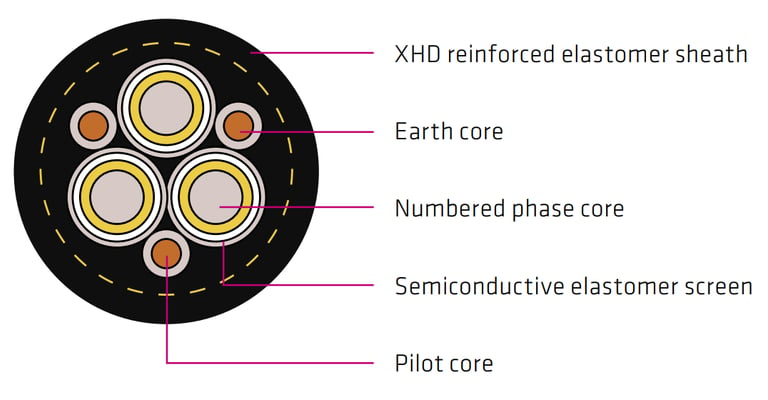

Introduction
In Australia's expansive mining industry and bustling port operations, reliable electrical infrastructure forms the backbone of productive operations. Mining reeling cables represent a critical component in this infrastructure, providing the essential power transmission that keeps heavy machinery operational in some of the world's most demanding environments. From the iron ore mines of the Pilbara to the coal fields of Queensland and the busy container terminals across Australian ports, these specialised cables must withstand extreme conditions whilst maintaining consistent power delivery.
The Type 455 mining reeling cable stands as a testament to Australian engineering excellence, manufactured to comply with the rigorous AS/NZS 2802 standard. This cable has been specifically engineered to meet the unique challenges faced by mining operations, port facilities, and materials handling installations across Australia and New Zealand. Unlike fixed installation cables, reeling cables must endure constant flexing, exposure to harsh environmental conditions, and the mechanical stresses associated with mobile equipment operations.
Key industries that rely on Type 455 cables include open-cut mining operations, where draglines and shovels work continuously to extract valuable resources, port facilities managing container movements and bulk cargo handling, and materials handling operations that require reliable power transmission to mobile equipment. The cable's design reflects decades of experience in understanding the specific requirements of these demanding applications.


What is Type 455 Mining Cable?
The Type 455 mining cable represents a sophisticated Class 1 semiconductive screened cable designed specifically for general industrial use in mining and heavy equipment applications. With voltage ratings spanning from 3.3/3.3 kV to 11/11 kV, this cable accommodates the diverse power requirements found across different types of mining and port equipment.
At its core, the Type 455 cable features semiconductive screened power cores that provide superior electrical performance and reliability. This screening technology ensures consistent electrical characteristics whilst providing protection against electrical interference and maintaining system integrity. The semiconductive screen effectively manages electrical stress distribution, particularly important in the high-voltage applications typical of large mining equipment.
A notable distinction of the Type 455 cable lies in its relationship to the Type 450 mining cable. Whilst both cables share many design principles, the Type 455 eliminates the composite insulation screen found in Type 450 cables. This design modification makes the Type 455 particularly suitable for specific applications where the composite screen may not be necessary, potentially offering cost advantages without compromising performance in appropriate applications.
The cable's construction philosophy centres on providing reliable power transmission for slow reeling and trailing applications. This specification makes it ideally suited for equipment that requires moderate cable movement during operation, as opposed to rapid reeling applications that might demand different design considerations. The slow reeling capability ensures longevity and reliability in applications where cables experience regular but measured movement patterns.
Technical Specifications
The Type 455 cable's technical excellence stems from its meticulously engineered construction, beginning with its core design. The cable incorporates three power conductors manufactured from tinned copper, chosen for its superior conductivity and corrosion resistance properties. These power cores are complemented by two earth conductors and one pilot core, all strategically positioned within the cable structure to optimise electrical performance and mechanical integrity.
Available conductor sizes range from 25mm² to 150mm², providing flexibility to match specific equipment power requirements. The power conductors feature nominal diameters ranging from 7.3mm for the smallest 25mm² conductor to 17.6mm for the largest 150mm² option, with each size carefully optimised for its intended application range.
Insulation technology represents a critical aspect of the Type 455's design. The cable utilises EPR (XR-EP-90) insulation with semiconductive elastomer screening. This advanced insulation system provides excellent electrical properties whilst maintaining flexibility essential for reeling applications. The insulation thickness varies according to voltage rating: 2.2mm for Type 455.3 (3.3kV applications), 3.0mm for Type 455.6 (6kV applications), and 5.0mm for Type 455.11 (11kV applications).
The cable's sheath represents perhaps its most distinctive feature. The extra heavy-duty XHD-85-PCP sheath incorporates polyaramid Kevlar® braid reinforcement, providing exceptional mechanical protection and durability. This reinforced construction enables the cable to withstand the mechanical stresses associated with reeling operations whilst maintaining electrical integrity. Sheath thickness ranges from 4.5mm to 6.9mm depending on cable configuration and voltage rating.
Operating temperature specifications reflect the cable's robust design. With a maximum operating temperature of +90°C and minimum operating temperature of -25°C, the Type 455 cable accommodates the extreme temperature variations encountered in Australian mining operations, from the scorching heat of outback mining sites to the cooler conditions found in underground operations or during winter months.
The cable demonstrates exceptional resistance to various environmental challenges. Chemical exposure resistance is rated as "Very good/Frequent", indicating the cable's ability to withstand exposure to the various chemicals encountered in mining operations, including oils, fuels, and industrial chemicals. Mechanical impact resistance is rated as "Heavy", reflecting its ability to withstand the physical stresses of industrial environments.
Water exposure capabilities include immersion and temporary coverage resistance, essential for operations that may encounter flooding or high humidity conditions. Solar radiation and weather exposure resistance make the cable suitable for direct exposure to Australia's intense sunlight and varied weather conditions.

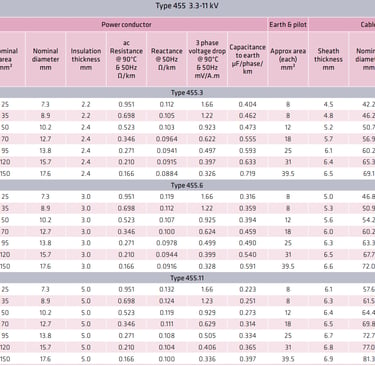
Application Fields
The Type 455 mining cable finds its primary application in slow reeling and trailing operations across diverse industrial sectors. In mining operations, the cable serves as the electrical lifeline for draglines, those massive excavators that strip overburden and extract ore in open-cut operations. These machines require reliable power transmission that can accommodate the cable's movement as the dragline advances across the mining area.
Power shovels represent another critical application for Type 455 cables. These machines, essential for loading operations in mining environments, require flexible power connections that can withstand the constant movement and vibration associated with digging and loading operations. The cable's construction ensures reliable power delivery whilst accommodating the mechanical stresses of shovel operations.
Excavators across mining and construction sites benefit from the Type 455 cable's robust construction. Whether used in coal mining, iron ore extraction, or construction projects, these machines require power cables that can accommodate their mobility whilst providing consistent electrical performance. The cable's flexibility and durability make it ideal for these applications.
Wharf crane operations represent a significant application area, particularly in Australia's busy port facilities. Container cranes, bulk cargo handlers, and other port equipment require reliable power transmission systems that can accommodate the constant movement associated with cargo handling operations. The Type 455 cable's resistance to environmental factors, including salt spray and moisture, makes it particularly suitable for marine environments.
Materials handling equipment across various industries benefits from the Type 455 cable's design. Conveyor systems, stackers, reclaimers, and other bulk materials handling equipment require flexible power connections that can accommodate movement whilst maintaining electrical integrity. The cable's construction ensures reliable operation in dusty, demanding environments typical of materials handling operations.
Open-cut mining operations present unique challenges that the Type 455 cable addresses effectively. These operations often involve large-scale equipment that must move across varying terrain whilst maintaining power connections. The cable's flexibility and environmental resistance make it ideal for these demanding applications.
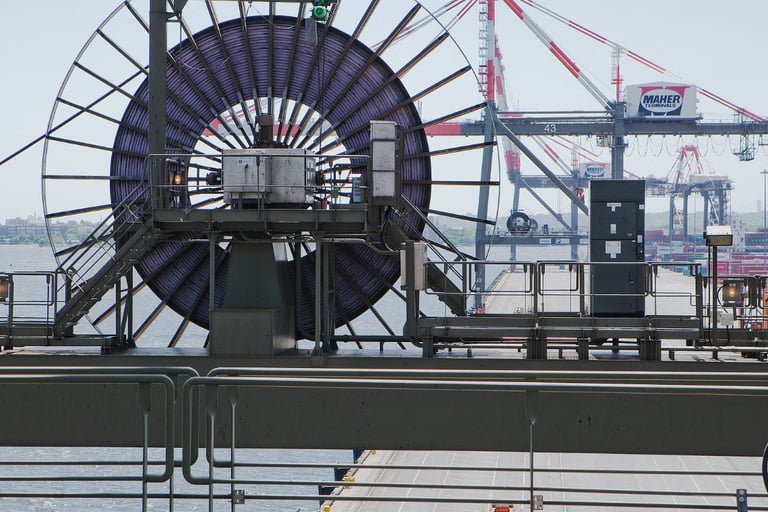

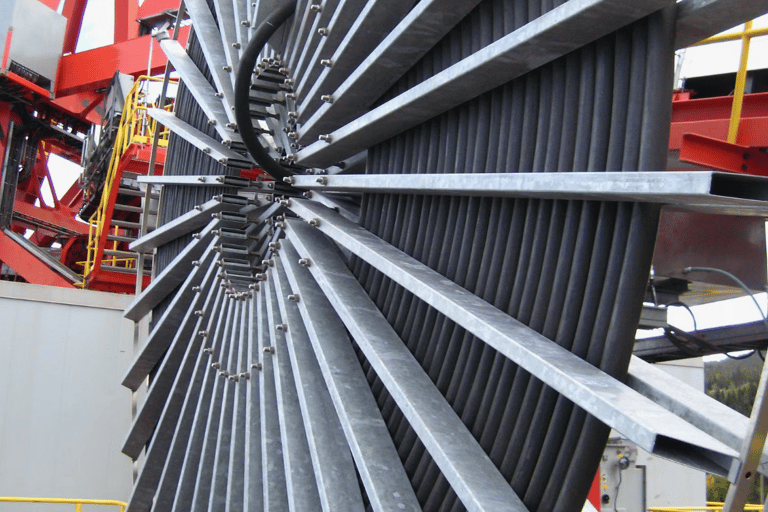

Performance & Reliability
The Type 455 cable's performance characteristics reflect its sophisticated engineering and construction. Flexibility represents a cornerstone of its design, enabling installation in mobile equipment where cables must accommodate regular movement without compromising electrical or mechanical integrity. This flexibility stems from the carefully selected materials and construction techniques that balance mechanical strength with the ability to flex repeatedly without failure.
Resistance to water immersion distinguishes the Type 455 cable in applications where moisture exposure is inevitable. Mining operations often encounter groundwater, flooding, or high humidity conditions that can compromise electrical systems. The cable's construction provides reliable protection against moisture ingress, ensuring continued operation even in challenging environmental conditions.
Mechanical impact resistance reflects the cable's ability to withstand the physical challenges of industrial environments. Mining and port operations involve heavy machinery, falling debris, and other physical hazards that can damage electrical systems. The Type 455 cable's reinforced construction and protective sheath provide superior resistance to mechanical damage.
Solar radiation and weather resistance ensure reliable outdoor operation across Australia's diverse climate zones. From the tropical conditions of northern Queensland to the arid environments of Western Australia, the cable maintains its performance characteristics despite exposure to intense sunlight, temperature variations, and weather extremes.
The cable's electrical characteristics contribute significantly to its reliability. AC resistance values, reactance specifications, and voltage drop characteristics are optimised for each conductor size and voltage rating. For example, the 95mm² Type 455.11 cable exhibits an AC resistance of 0.271 Ω/km at 90°C and 50Hz, with a reactance of 0.108 Ω/km, resulting in a three-phase voltage drop of 0.505 mV/A.m under operating conditions.
Capacitance characteristics, ranging from 0.223 to 0.719 μF/phase/km depending on configuration, ensure appropriate electrical behaviour in high-voltage applications. These characteristics contribute to system stability and reliable power transmission across extended cable lengths.


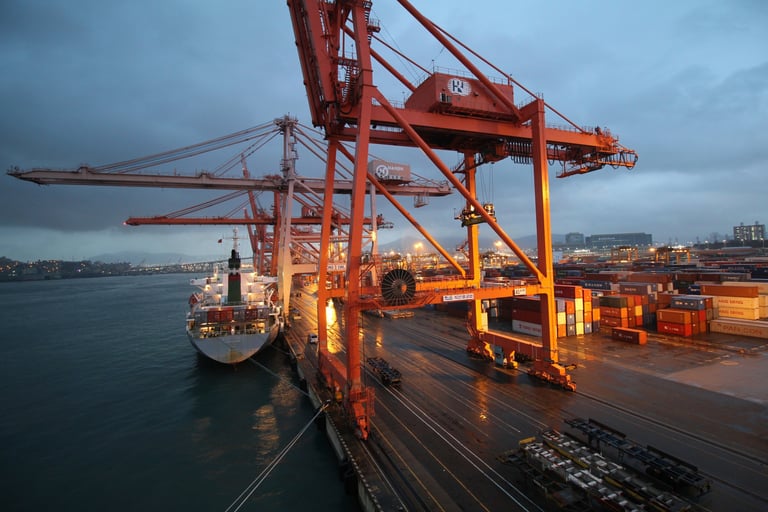

Comparison with Other Cable Types
Understanding the relationship between Type 455 and Type 450 cables provides insight into appropriate application selection. Both cables share fundamental design principles, including semiconductive screening and reinforced sheath construction. However, the Type 455's elimination of the composite insulation screen represents a significant design distinction.
The composite insulation screen in Type 450 cables provides additional electrical protection and performance characteristics that may be necessary in certain applications. However, in applications where this additional screening is not required, the Type 455 offers a potentially more cost-effective solution without compromising essential performance characteristics.
Application selection between these cable types depends on specific electrical requirements, environmental conditions, and performance specifications. Type 455 cables excel in applications where reliable power transmission, flexibility, and environmental resistance are primary requirements, but where the additional screening of Type 450 cables may not be necessary.
The elimination of composite insulation screening in Type 455 cables can provide benefits in terms of cable flexibility and potentially reduced manufacturing costs. This design approach reflects a focused engineering philosophy that optimises the cable for its intended applications whilst eliminating unnecessary complexity.
When compared to fixed installation cables, both Type 455 and Type 450 cables demonstrate superior flexibility and mechanical durability. The reeling cable construction accommodates the dynamic stresses associated with mobile equipment operations that would quickly damage conventional fixed installation cables.
Installation and Maintenance Considerations
Proper installation of Type 455 cables requires understanding of their specific characteristics and limitations. The cables are designed for installation in free air and mobile equipment applications, with installation procedures that accommodate their flexibility requirements whilst ensuring mechanical protection.
Cable routing must consider the reeling patterns and movement characteristics of the equipment being served. Proper support systems and protection against mechanical damage ensure optimal cable performance and longevity. The cable's flexibility allows for installation in confined spaces and complex routing situations common in mobile equipment applications.
Regular inspection and maintenance programmes contribute significantly to cable reliability and longevity. Visual inspection for mechanical damage, electrical testing to verify insulation integrity, and monitoring of connection points help identify potential issues before they result in equipment failure.
Environmental monitoring in mining and port applications helps identify conditions that may affect cable performance. Monitoring temperature extremes, chemical exposure, and mechanical stress levels enables proactive maintenance approaches that extend cable life and improve system reliability.
Common Issues and Troubleshooting
Q: What are the most common causes of Type 455 cable failure in mining applications?
A: The most frequent causes of Type 455 cable failure include mechanical damage from improper handling or inadequate protection during reeling operations, water ingress due to sheath damage in wet conditions, and thermal degradation when cables operate beyond their temperature ratings. Chemical contamination from mining processes and excessive flexing beyond design parameters can also contribute to premature failure. Regular inspection and proper installation practices significantly reduce these risks.
Q: How can I determine if my Type 455 cable has sustained water damage?
A: Water damage in Type 455 cables typically manifests through increased insulation resistance readings during electrical testing, visible moisture in cable connections, or corrosion of metallic components. Advanced diagnostic techniques such as partial discharge testing can detect water ingress before it causes complete failure. If water damage is suspected, immediate electrical testing and visual inspection should be performed to assess the extent of damage and determine if cable replacement is necessary.
Q: What factors should I consider when selecting between different Type 455 voltage ratings?
A: Voltage rating selection depends on your equipment's operating voltage, with Type 455.3 suitable for 3.3kV applications, Type 455.6 for 6kV systems, and Type 455.11 for 11kV operations. Consider system voltage requirements, insulation coordination with other equipment, and future expansion plans. Higher voltage ratings provide additional safety margins but involve increased cable size and cost. Consultation with electrical engineers ensures appropriate selection for specific applications.
Q: How often should Type 455 cables be inspected in mining operations?
A: Inspection frequency depends on operating conditions and application severity. Generally, visual inspections should occur monthly, with detailed electrical testing performed annually or bi-annually. In particularly harsh environments or critical applications, more frequent inspection may be warranted. Inspection should include visual examination of cable condition, electrical testing of insulation integrity, and verification of connection integrity. Maintaining detailed inspection records helps identify trends and optimise maintenance schedules.
Conclusion
The Type 455 mining reeling cable represents a pinnacle of Australian electrical engineering, specifically designed to meet the demanding requirements of mining, port, and materials handling operations. Its sophisticated construction, featuring semiconductive screened power cores, reinforced elastomer sheath with Kevlar® braid reinforcement, and comprehensive environmental resistance, positions it as the preferred choice for heavy-duty industrial applications requiring reliable power transmission combined with mechanical flexibility.
The cable's technical specifications, spanning voltage ratings from 3.3kV to 11kV and conductor sizes from 25mm² to 150mm², provide the versatility necessary to accommodate diverse equipment requirements across the mining and industrial sectors. Its fire-retardant properties, chemical resistance, and ability to withstand extreme environmental conditions make it particularly well-suited to Australian operating conditions.
The Type 455 cable's design philosophy, emphasising reliability, durability, and safety, reflects the critical nature of power transmission in industrial operations where equipment downtime can result in significant economic impact. Its proven performance in draglines, shovels, excavators, wharf cranes, and materials handling equipment demonstrates its versatility and reliability across diverse applications.
For mining operations, port facilities, and materials handling installations seeking reliable, flexible power transmission solutions, the Type 455 mining reeling cable offers the technical performance, environmental resistance, and mechanical durability necessary for successful long-term operation. Its compliance with AS/NZS 2802 standards ensures quality and reliability, whilst its Australian manufacturing heritage provides confidence in local support and expertise.
The investment in Type 455 mining reeling cables represents a commitment to operational reliability and safety, essential factors in Australia's competitive mining and industrial sectors. As operations continue to demand higher performance and reliability from their electrical infrastructure, the Type 455 cable's proven design and comprehensive capabilities position it as the optimal choice for demanding industrial applications.
How to Reach Us
Get in Touch
SiteMap
Product Catalogue
Reeling Cable
Festoon Cable
Shore Power Cable




Scan to add us on WeChat
